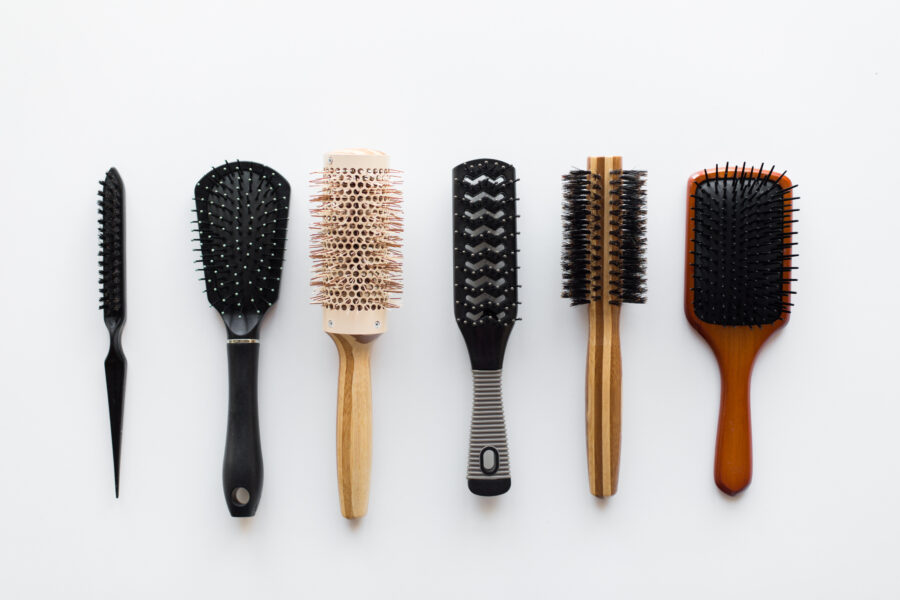Split ends are one of the most common hair concerns, often making strands look dry, frizzy, and unhealthy. They occur when the protective outer layer of the hair shaft, known as the cuticle, wears away due to damage, leaving the inner core exposed. While trimming is the only way to completely remove split ends, using the right brushing techniques can significantly reduce their occurrence and keep your hair looking smooth and healthy.
The type of Hair Brush you use and the way you handle it both play a major role in preventing breakage and split ends. Brushing is not just about detangling—it helps distribute natural oils, minimize stress on hair strands, and maintain overall hair health when done correctly. Understanding the science and technique behind proper brushing can make all the difference in preserving strong, shiny hair.
Why Split Ends Form
Split ends develop when hair cuticles are weakened by mechanical stress, chemical treatments, heat styling, or environmental exposure. Frequent brushing with the wrong tools or poor technique can accelerate this damage. Over time, weakened cuticles split apart, causing fraying that travels up the strand if left untreated. Preventing split ends means reducing unnecessary friction and handling hair gently during daily grooming.
Choose the Right Brush
Selecting the right brush is the foundation of healthy hair care. Wide-tooth combs or brushes with flexible bristles are ideal for detangling wet hair, as they minimize pulling and breakage. For daily use, natural boar bristle brushes are excellent for distributing oils along the hair shaft, keeping strands hydrated and less prone to splitting. Nylon bristles can also be effective for thicker hair types, but it’s important to avoid brushes with sharp or rough edges that can damage cuticles.
Start from the Ends
One of the most effective techniques to prevent split ends is to begin brushing at the ends of your hair and gradually work upward toward the roots. This approach helps gently loosen knots without forcing the brush through tangles, which can cause snapping and splitting. Once the ends are detangled, you can move upward in small sections until the entire length is smooth.
Brush in Sections
Brushing your hair in smaller sections allows for more control and reduces tension on each strand. This method also ensures that oils are evenly distributed and tangles are addressed gradually. Sectioning prevents the common mistake of dragging a brush through large, knotted areas, which leads to breakage and split ends.
Be Gentle with Wet Hair
Wet hair is at its most vulnerable state because water weakens the hydrogen bonds that provide structure. To avoid damage, use a brush specifically designed for wet hair or a wide-tooth comb. Applying gentle strokes and avoiding harsh pulling will protect the cuticle and keep ends intact. It’s also helpful to blot hair with a towel instead of rubbing, as friction from rough drying can cause splits.
Limit Over-Brushing
While brushing is beneficial for distributing natural oils and maintaining shine, over-brushing can have the opposite effect. Too much mechanical stress weakens the cuticle, making ends more likely to fray. Aim to brush only as much as needed to keep hair manageable and smooth. For most people, brushing once or twice a day is sufficient.
Clean and Maintain Your Brush
A clean brush is essential for healthy hair. Over time, oil, dirt, and product residue build up on bristles, which can transfer back onto your strands and make them appear dull. This buildup can also increase friction during brushing, contributing to split ends. Regularly remove trapped hair and wash your brush with mild shampoo to keep it hygienic and effective.
Pair Brushing with Healthy Habits
Brushing alone cannot completely prevent split ends. Complement your brushing routine with other healthy practices, such as regular trims, heat protection before styling, and deep conditioning treatments. A balanced diet rich in vitamins and proteins also strengthens hair from within, reducing the likelihood of damage.
Final Thoughts
Preventing split ends requires a thoughtful approach to hair care, and brushing plays a key role in that process. By selecting the right tools, practicing gentle techniques, and maintaining your brush, you can minimize breakage and protect your hair’s natural strength. With consistent care, you’ll notice fewer split ends, smoother strands, and healthier-looking hair overall.
